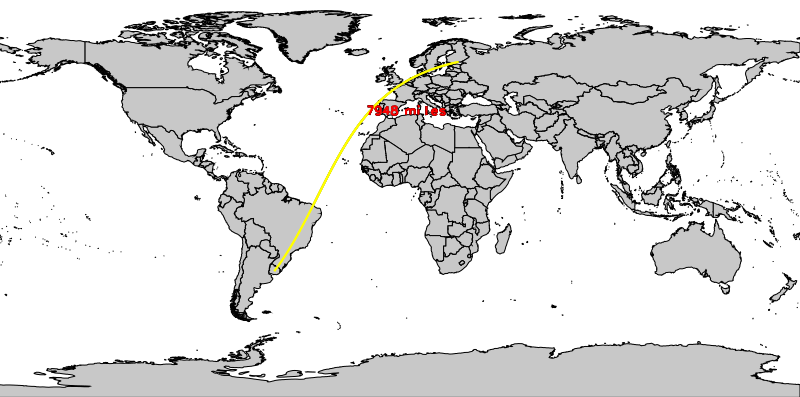DESCRIPTION
d.geodesic displays a geodesic line in the active frame on the user's
graphics monitor. This is also known as the great circle line and traces the
shortest distance between two user-specified points on the curved surface of
a longitude/latitude data set. The two coordinate locations named must fall
within the boundaries of the user's current geographic region.
OPTIONS
This program can be run either interactively or non-interactively.
If the user types d.geodesic on the command line and runs it without other program
parameters, the mouse will be activated; the user is asked to use
the mouse to indicate the starting and ending points of each geodesic line
to be drawn. The default line color (black) and text color (red)
will be used.
Alternately, the user can specify the starting and ending coordinates
of the geodesic, line color, and text color on the command line,
and run the program non-interactively.
Once the user indicates the starting and ending coordinates
of the geodesic, the line and its length (in miles) are displayed to
the user's graphics monitor. If the text color is set to none,
the great circle distance is not displayed.
EXAMPLE
A geodesic line if shown over the political map of the world
(demolocation dataset):
g.region vector=country_boundaries -p
d.mon wx0
d.vect country_boundaries type=area
d.geodesic coordinates=55:58W,33:18S,26:43E,60:37N \
line_color=yellow text_color=red
# show additionally 10 degree grid
d.grid 10

Geodesic line (great circle line)
NOTES
This program works only in GRASS locations with longitude/latitude
coordinate system.
SEE ALSO
d.rhumbline,
d.grid
AUTHOR
Michael Shapiro, U.S. Army Construction Engineering Research Laboratory
Last changed: $Date$

